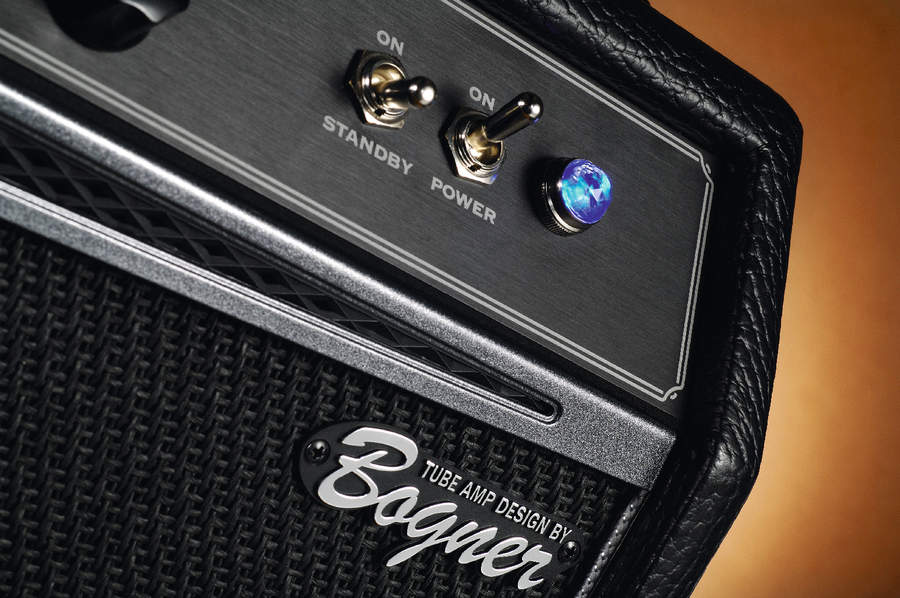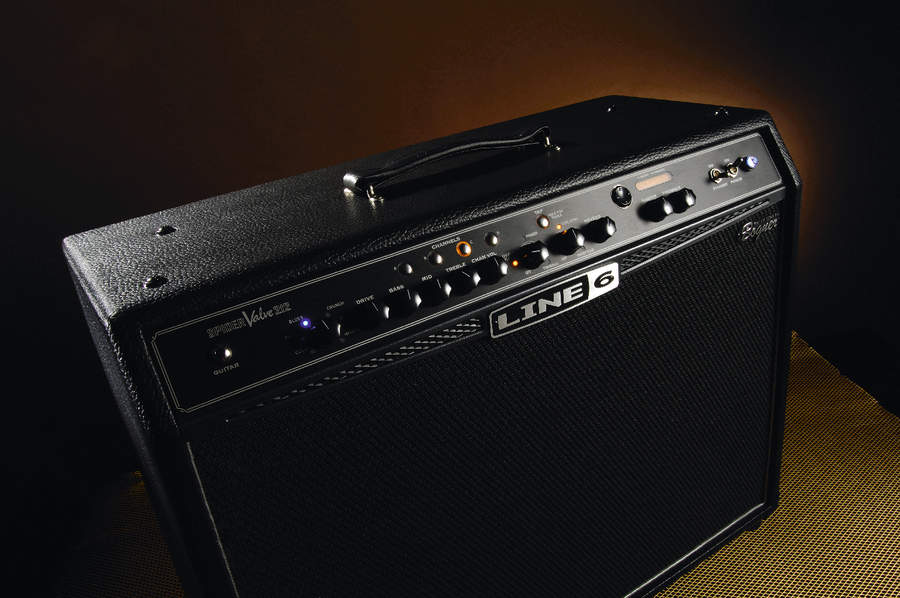MusicRadar Verdict
Not only is the Spider Valve a success from a design standpoint, its versatility and power should make it a sure-fire big sell
Pros
- +
Great range of sounds; plenty of power; a big step up in sonic terms from its solid-state predecessors
Cons
- -
Some nasty presets; reverb voicing could be better; no footswitch included
MusicRadar's got your back






The Line 6 brand was built on modelling technology, so when the company announced that it had teamed up with boutique amplifier guru Reinhold Bogner to design a genuine valve amp promising all the versatility of a digital modeller, it caused something of a stir in the industry.
Some might have expected Line 6's first foray into valve technology to be a high-end, all-singing, all-dancing Vetta-style combo. Instead they have shrewdly opted for a simpler front end that offers 12 new amp models - two variations each of clean, twang, blues, crunch, metal and insane - along with a simple effects section that will be familiar to users of the solid-state Spider series.
Heaving the combo out of its box it's thankfully not the heaviest 2 x 12 we have encountered, but nonetheless Line 6 has helpfully included a set of casters, which can be fitted to make transportation a little easier.
Cabinet construction is neat and tidy and consistent with similar mid-priced combos. It's reassuring to note that Line 6 and Bogner have also opted for quality internal components in the shape of Celestion Vintage 30 drivers and Sprague Orange Drop capacitors.
We were disappointed not to see at least a basic FBV2 footswitch included as part of the package; 36 user and hundreds of artist preset sounds are all well and good, but to switch between them on the fly at a gig or rehearsal you'll have to splash a little more of your hard-earned.
On powering up an array of blue and amber LEDs skitter across the understated front panel, which as well as the aforementioned amp model and effects controls includes a digital display that enables you to navigate your way through preset banks and also offers a visual reference for the tuner which is activated by holding the effects section's tap tempo button for two seconds.
The tap tempo button also offers other functions; adding a distortion boost when you press and hold it in conjunction with turning the drive control past 12 o'clock, and engaging a noise gate when you do the same with the reverb control.
We don't have the space here to go into detail about the various amplifiers that Line 6 and Bogner have modelled, but suffice to say the usual smorgasbord of Fender, Vox, Marshall and Boogie flavours is provided for your delectation. Now, just how juicy is this Spider...?
Want all the hottest music and gear news, reviews, deals, features and more, direct to your inbox? Sign up here.
In use
Most players are likely to dive straight into the myriad presets in order to gauge the amp's tonal range, so this is our starting point too. As ever, whether or not some of these sounds truly capture the iconic tone of any given song or artist is always going to be hugely subjective and dependent on both the instrument you choose to use and your playing style.
To our ears, the effects and gain levels are often rather overcooked, but at least there's an indication that for anyone who requires lots of very different sounds on tap, be that performing covers in a function band or playing a diverse selection of original material, the Spider Valve has a lot to offer.
Once you get past the presets and start sculpting your own sounds, the Spider Valve really comes to life. Between the clean and twang amp models, there are a variety of solid, musical clean tones to suit most tastes.
With the master volume wound up to gig levels, the 6L6 power valves really begin to enter the equation and loud, authoritative clean voices with plenty of dynamics and musical break-up are there in abundance. It's often a complaint directed at modelling technology that while clean and filth sounds are convincing, it's authentic mid-gain grit that tends to be a struggle.
We're happy to report that the upper end of the twang spectrum and both blues voices provide plenty of retro rasp and do a fine job of evoking Dave Davies and Keef-style raunch, which with judicious use of the onboard EQ or your guitar's tone control can be tamed to provide tasty mellow blues lead tones.
We've heard more organic, expressive mid-gain lead voices, but we've also heard those that are less so, crucially from all-valve circuits without any digital technology involved whatsoever. That said, to our ears, and no doubt in part because of the 6L6 power stage, the sounds that are modelled after Fender and Boogie amplifiers seem the most convincing, and in the studio we'd still opt for a Vox Valvetronix amp given the choice when AC30-style chime and classic Brit-rock overdrive is required.
For more aggressive rock sounds, unsurprisingly, the crunch and metal models provide saturation in abundance. There are a number of tasty flavours, but our personal pick of the bunch for heavy alternative rock and metal is the amber LED metal setting. Whether or not it sounds and feels just like the Dual Rectifier circuit that it is based on is debatable, but there's no shortage of tight bottom end punch and ferocious, articulate distortion.
To our ears, the insane settings that crank up the front-end gain even further are just too woofy and hard to control for use at gigging volume; this level of saturation is much better suited to use in a studio setting with a direct signal.
Like previous Spider combos, the Spider Valve has a limited but useful range of effects to add colour to your sound, with the tape and sweep echo delays in particular adding a touch of subtlety above and beyond many amplifiers' onboard effects processors. We have to say that we find the reverb a little disappointing by comparison; more presence and spring character wouldn't go amiss.
Celestion Vintage 30 drivers are a good choice as they can handle everything that the power amp throws at them, and while this isn't the loudest twin 6L6 circuit we've heard, it's certainly loud enough to hold its own in a normal, pub gig type environment.
It's symptomatic of guitar culture that the question most prospective buyers want this review to answer is, does the Spider Valve actually sound and feel like playing through a regular, bona fide valve amp? And the answer is, some overly processed presets aside, yes it does.
Okay, so under serious critical scrutiny it can't compete with the sheer white knuckle dynamics or intimacy of playing through an old Vox, a 'Plexi' stack or a small Tweed Fender, but then neither can any modern cost-effective multi-channel valve amplifier.
What the Spider Valve can do, however - that most other classic and modern valve amp designs cannot - is give you access to a library of tones from across the breadth of the recorded history of the electric guitar. Moreover, those tones sound and feel close enough for the majority of players, while costing significantly less than a vintage amp collection.
In this 2 x 12 format there's the power and projection for almost any gig, but we can't help suspecting that the more compact and easily portable 1 x 12 version is going to be the most popular option.
Chris Vinnicombe worked with us here on the MusicRadar team from the site's initial launch way back in 2007, and also contributed to Guitarist magazine as Features Editor until 2014, as well as Total Guitar magazine, amongst others. These days he can be found at Gibson Guitars, where he is editor-in-chief.